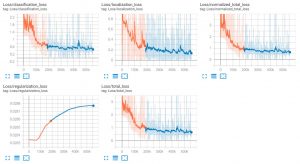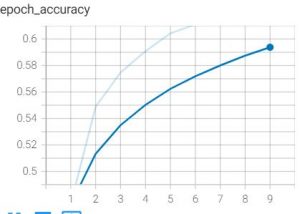The past two weeks I worked on:
- Finished the design report. I wrote most of the documentation on the visualizer component.
- formatted datasets for training. Detector required tfrecord files from DeepFashion2 dataset while classifier required images sorted into classes from DeepFashion dataset.
- Trained a clothing detector that detects bounding boxes and does simple classification of clothing articles.
- tried yolov4 using pytorch, but API was really bad and had many problems I had to fix by looking at pull requests. Ultimately, didn’t use.
- tried efficientDet0 with tensorflow2 object detection API and it was much better documented and had more community support. Ultimately, used this.
- Using DeepFashion2 dataset, which doesn’t provide good classification labels, but has bounding boxes over every clothing item (DeepFashion only has 1 bounding box per image)
- unfortunately, I didn’t measure accuracy during training, but here are the loss figures:

- Training a clothing classifier that provides more fine-grained classification.
- Using efficientNetb0 from keras. Below is test accuracy:

- Still requires more epochs until convergence.
- Created simple clothing recognition API with aforementioned models. Currently returns top 10 most likely bounding boxes and labels.
For Next Week:
- Finish training models and perform fine-tuning.
- Start training models for more fine-grained classification like shape and material.
- Implement color classification.
- Right now detector could predict differently from classifier. I’m not sure what to do when this happens, but I should figure it out.
I am slightly ahead of schedule.